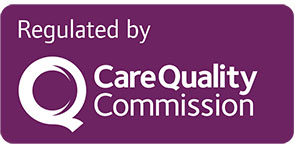With the first piece from our series of dermatology blogs, take sixty seconds to find out how to manage your condition and keep your skin looking its best.
What is eczema?
- Skin is like an ingenious crazy-paving barrier – skin cells sit neatly beside one another and are held with a type of glue called filaggrin which pulls them into shape and then breaks down to form a type of insulation
- Some people are born with a type of filaggrin that doesn’t work well enough – the glue is not sticky enough
- If the cells shrink or dry out, or the glue doesn’t work properly, tiny holes allow water to leak out and irritants, dirt, and bugs (allergens) to get in…an eczema flare-up
- Dryness and irritation cause the skin to itch, so you scratch, which causes itching, dryness, and thickening of the skin.
Seasonal Eczema
Many things are worse in winter – coughs and colds, sunbathing, BBQs, and eczema amongst them! Eczema is a catch all term for dry red skin that becomes itchy. It’s common (20% of kids and 10% of adults in the UK) and runs in families – often with hay fever and asthma. There are many causes, lots of triggers, and plenty of options for treatment!
What can I do to look after my skin?
There are several actions you can take to help your skin and keep eczema at bay:
Avoid soap
soap contains sodium lauryl sulphate (SLS) which is great for bubbles but not so good for eczema. Use a moisturising cream instead – it feels a bit odd to begin with, but you’ll get used to it.
Gently wash every day
this allows you to see what needs attention, cleans the bugs away, and makes moisturising easier.
Moisturise – the more the better!
There is no one best moisturiser…. The best one is the one you use the most. The worst thing about moisturising is it takes time, so do what you can.
Avoid triggers
Some people are sensitive to lots of cleaning or cosmetic products and others find wool, pet hair, or heat to be the biggest trigger. Stress is a common trigger, but this can be tricky to avoid!
Eat healthily
Foods are not common eczema triggers. In young children, they may be, but you could expect other symptoms too so you should consult a GP if you think a food is causing eczema.
Use your x-ray specs
Know the areas that flare-up most and keep on top of them. Be conscious that even when the eczema seems invisible and stops itching, it’s still there.
Don’t be afraid of steroid creams and ointments
When needed and used properly, steroids are often the most effective tool we have. You’ll need a prescription and some advice first, so see your GP for tailored advice and treatment options.
Consider the area
some skin (like eyelids) is very thin, whilst some (hands, feet) is much thicker, so the type of creams and ointments needed changes depending on this and how bad the eczema is.
Protect areas you know are prone
Avoid wool, wear gloves, and keep nails short!
What if I’m not getting anywhere with treatments?
If standard eczema treatments aren’t controlling things well, there may be an infection. Seeing a GP will help you understand your personal eczema journey. For example, you may have a type of eczema caused by coming into contact with something so you might need patch testing.
There are medications you can take by mouth or injection – you’d need to see a dermatologist. Some people improve with light therapy too, so this is worth discussing.
Finally, it may not be eczema! There are many other rashes that cause flare-ups so it’s worth considering if your condition may be something different entirely.
Find out more
For information on our supporting services, browse the links below:









